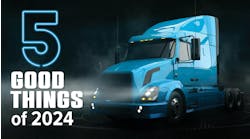The U.S. EPA has invited the public to comment on its proposal to approve seven additional parts of the clean air plan for the Houston-Galveston area. The plan, designed to reduce NOx emissions in the area by 90%, details how the eight-county area will ensure it meets the national health-based air quality standard for ozone by 2007.
A range of actions to reduce air pollution are included in the plan, focusing on local and regional controls and a mid-course review in May 2004 to assess how controls are working and make revisions if needed.
"While implementation of the plan will proceed as scheduled, we will continue to work with our partners at the federal and local level to come up with better ways to meet the air quality standards," said Texas Natural Resource Conservation Commission commissioner R.B. "Ralph" Marquez.
If it passes, “boutique” diesel fuel, a specially formulated blend designed to help qualifying cities and counties meet federally mandated clean air standards, must be available for sale in Texas by 2005. In addition, EPA said idling restrictions will be in effect from April through October.
The American Trucking Assns. (ATA) said in May it is against the use of boutique diesel fuels in the Dallas-Ft. Worth area. ATA argued that the boutique fuel was contrary to the Bush administration's National Energy Policy and would cause supply interruptions and detrimental price spikes.
ATA also argued that the proposed departure from the national diesel fuel standard was not "necessary" for Texas to comply with the National Ambient Air Quality Standards, and is therefore unlawful under Title 2 of the federal Clean Air Act.
EPA said it must approve the state plan by Oct. 15, or propose its own pollution-reduction plan.


